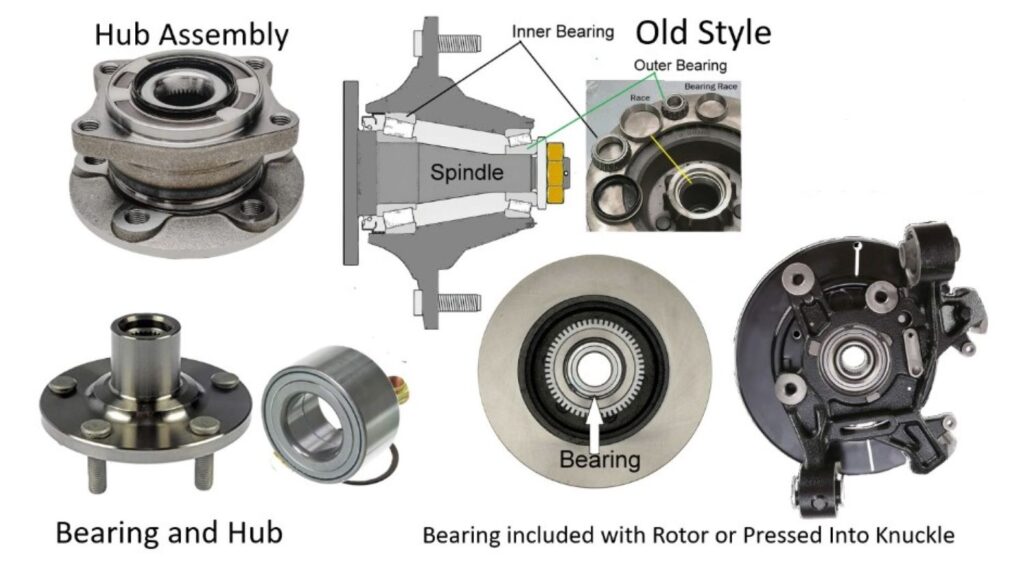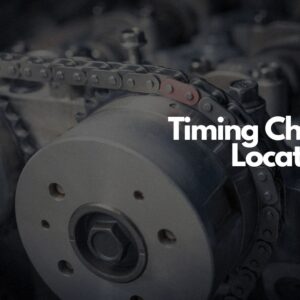Q: Where Are the Wheel Bearings Typically Located?
A: The wheel bearing is located inside the wheel hub assembly. The wheel hub assembly is where your wheels are mounted. This component typically sits in front of the steering knuckle. Once you’ve disassembled the wheel hub, you’ll see the wheel bearing mounted onto the spindle or axle shaft. Depending on the vehicle, there could be one or two wheel bearings per wheel.
Every wheel has its own set of bearings. The rear bearings will be part of the axle on a rear wheel drive vehicle, or mounted (sometimes bolted) into the rear knuckle assembly. The front bearings will either be pressed into the rotor or they will be bolted to or pressed into the front steering knuckle. Older vehicles had bearings on the front that were removed and repacked with grease.
Wheel bearings allow your vehicle’s wheels to spin with minimal resistance. Wheel bearings have an inner and outer ring that can spin independently from one another using metal balls or rollers that sit between these two rings.
In a 2004 to 2014 Ford F-150, the wheel bearings are located behind the wheel hub. To get to it, you’ll need to remove the brake caliper and brake rotor. Then, four bolts need to be unscrewed from behind. Once these bolts are removed, the front of the wheel hub can be hammered out of place to reveal the wheel bearings and spindle inside.

Tips on How to Access the Wheel Bearing
Removing the bolts that secure the wheel hub onto the steering knuckle can be difficult since Loctite might have been applied. We recommend removing the bolts using an impact wrench.
Once you’ve accessed the wheel bearing, clean old grease from the spindle, hub, and other components. Remember that reinstalling the bolts that hold the wheel hub to the steering knuckle requires a lot of torque. You’re going to need a long torque wrench to reinstall it correctly. Always refer to the vehicle owner’s manual to find the appropriate torque specifications.

Any information provided on this Website is for informational purposes only and is not intended to replace consultation with a professional mechanic. The accuracy and timeliness of the information may change from the time of publication.




























